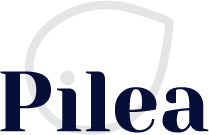From Isolation to Integration
Fostering Workplace Connections in a Remote World
Recently, at a networking event, I discussed the challenges of remote work, particularly for newer employees. A key issue that emerged was the anxiety many remote workers feel due to the lack of in-person interactions that help build connections and navigate conflicts.
In a traditional office setting, employees benefit from a natural osmosis of information and social cues—like facial expressions, body language, and casual conversations—that create a cohesive organization. New hires sit alongside experienced colleagues, absorbing the company culture and learning the ropes through everyday interactions. Over time, these small exchanges build trust and foster strong relationships that can endure challenges.
In contrast, remote work can leave employees feeling isolated and disconnected. Without face-to-face interactions, misunderstandings become more common, leading to anxiety when individuals perceive that someone is upset with them in an email or Slack message.
Decompressing after experiences that spike our stress response is vital for regulating our nervous systems. However, when you’re home alone, that regulation doesn’t occur as naturally. You might end up stewing in your thoughts, which can lead to prolonged stress, anxiety, wasted time, and ultimately leave you vulnerable to burnout.
Interestingly, even in the office, we see behaviors suggesting people aren’t fully utilizing the in-person environment. Younger employees sometimes default to Slack or other messaging tools to communicate with someone just a few feet away, avoiding face-to-face conversations even when it’s readily available.
This led me to question: Is it virtual work or a broader shift in work culture?
As younger generations, who grew up immersed in smartphones and online communication, enter the workforce, we observe a cultural pull away from in-person interaction. In remote settings, these issues become more pronounced. A lack of interaction and immersion in the organization’s culture can leave people feeling isolated, disconnected, and alone in their struggles.
“Our tolerance for conflict and our ability to challenge one another are proportional to the vulnerability and quality of our relationships.”
When we primarily communicate via chat and email—as if talking to an AI—we lose much of the human connection that underpins trust and healthy conflict.
In a fast-growing startup, growth happens quickly, and getting caught in confusion, miscommunication, or conflict can significantly inhibit a company's ability to reach key milestones and achieve its goals. Organizations perform best when people are equipped with hard skills and strong interpersonal foundations to adapt, stay in sync, and pivot together.
Encouraging Growth and Reinforcing Culture
I got excited about these insights because they highlight a key benefit employees often cite in companies that partner with Pilea. Our embedded team coaches, part of our Core Method, are considered essential resources for new hires and existing employees. They serve as repositories of the company's story and culture, helping individuals embody the company, recognize their strengths, and collaborate effectively.
Coaching empowers individuals to grasp the context of their challenges, identify personal patterns, and prepare to share these insights with colleagues. This fosters authentic connections in both remote and in-person environments.
A coach has proven invaluable for new team members, allowing them to quickly acclimate and feel confident in their roles without expending their limited social capital. It also provides ongoing support for long-standing employees to enhance collaboration.
While it's important for managers to play a similar role—reinforcing cultural norms and encouraging open communication—many employees hesitate to discuss personal patterns or conflicts with their managers out of fear of damaging their reputations or jeopardizing their careers. A coach offers a safe, confidential space for honest dialogue, enabling individuals to grow from their experiences and choose better paths instead of hiding patterns that lead to conflict.
What You Can Do If You Don’t Have a Coach
So, what can you do if you don't have an embedded Pilea coach? Here are a few steps that can make a significant difference:
In-Person is Still the Best: If you’re a leader, it's worth the expense to bring your team together to reconnect periodically. It's easier to build trust and understand one another as whole people when you’re a person. This will enhance your collaboration in virtual settings.
Share and Understand Each Other's Concerns: On our team, we regularly check in on our patterns, share them when they arise in our work together, and make requests for support in our growth and collaboration. Individual coaching, therapy, or even one-on-ones can help people identify their patterns, which can be challenging to recognize. For example, try saying, “When I get a short Slack message like this, I feel… or I assume you think…” and have the other person respond, “When I send a message like this, I mean… or I intend for you to feel…”
Find Small Ways to Build Trust in Your Company: Assume good intent, go directly to the source, facilitate non-work “human time” regularly, encourage vulnerability by demonstrating it yourself, and break down cliques and silos by fostering cross-department connections.
Talk to us about getting an embedded coaching team!
To see future blog posts and other leadership and culture content from us - Sign up for our newsletter.

